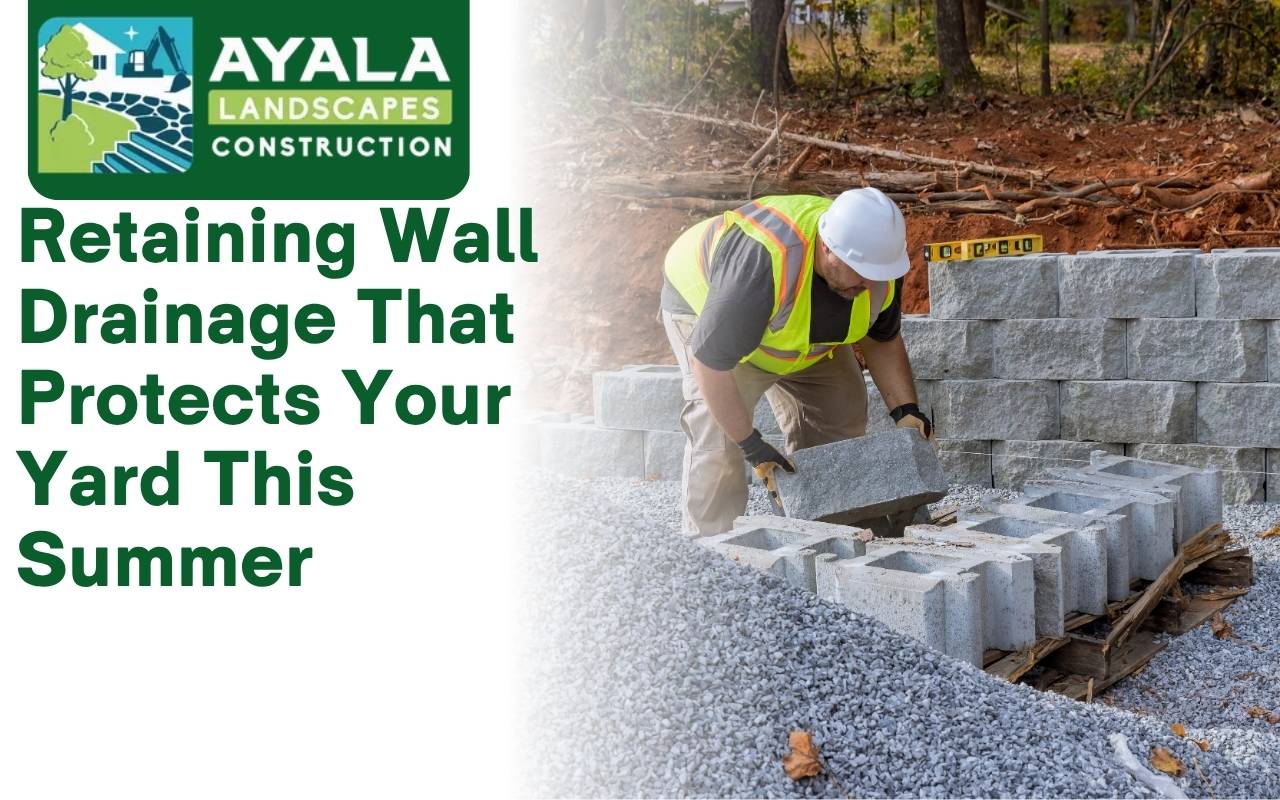
If your yard includes a retaining wall, you need to think about how water moves through and around it, especially during summer storms. Retaining wall drainage plays a major role in preventing water buildup, wall failure, and damage to surrounding landscaping.
At Ayala Landscapes Construction LLC, we build smart drainage into every outdoor project. Whether you’re upgrading an old wall or adding a new one, we’ll help make sure water doesn’t become a problem.
Why Proper Retaining Wall Drainage Matters
What Happens Without Drainage
When water builds up behind a retaining wall, pressure increases. Over time, this can cause cracking, leaning, or even collapse. Poor drainage also leads to soil erosion, mildew, and soggy lawn areas.
Common Signs of a Drainage Issue
- Water seeping through wall joints
- Soil washing away from behind the wall
- Pooling at the base of the wall
- Cracks or bulging in the wall surface
Good drainage isn’t just a bonus—it’s essential to keeping your yard and structures safe. Learn more about drainage solutions for landscaping on our services page.
Key Components of Retaining Wall Drainage
Gravel Backfill and Filter Fabric
Behind every quality wall is a layer of gravel backfill. It allows water to move freely downward. Adding filter fabric prevents soil from clogging the gravel, which keeps the system working over time.
Drain Pipes (Weep Holes or French Drains)
Drain pipes, or weep holes, give water an escape route. They are installed at the bottom of the wall and connect to an outlet or underground French drain that directs water away from the base.
Proper Grading Above the Wall
The soil above the wall should be sloped to send water away, not toward it. Without correct grading, even the best drainage setup won’t work as intended.
Summer Maintenance Tips for Retaining Wall Drainage
Check for Blockages
Drain pipes can get clogged with roots, debris, or sediment. Clear out any visible weep holes or underground outlets to keep water flowing.
Watch for Erosion Around the Wall
After summer storms, inspect the area around your wall. If soil or mulch is shifting, it may be a sign that water is bypassing your drainage system.
Keep Landscaping in Check
Avoid planting deep-rooted shrubs or trees near retaining walls. Roots can interfere with drains and put extra pressure on the structure. For yard design ideas that avoid these problems, check out Spanaway backyard landscaping ideas.
FAQs – Retaining Wall Drainage
Do all retaining walls need drainage?
Yes. Even small walls can build up water pressure behind them. Proper drainage is critical to prevent long-term damage.
Can I add drainage to an existing retaining wall?
In many cases, yes. We can assess your wall and recommend retrofitting solutions such as French drains or surface grading.
What’s the best way to prevent wall damage in the summer?
The combination of gravel backfill, proper grading, and working drain pipes will keep your retaining wall strong. Ayala Landscapes Construction LLC offers customized drainage systems that keep your walls—and your yard—safe from summer damage.
Protect Your Yard with Smart Retaining Wall Drainage
Don’t let summer storms ruin your landscaping. Retaining wall drainage is one of the best investments you can make in the long-term health of your yard.
Ayala Landscapes Construction LLC helps homeowners in Spanaway and beyond build smarter, safer outdoor spaces. See all our services or reach out for a free consultation.
